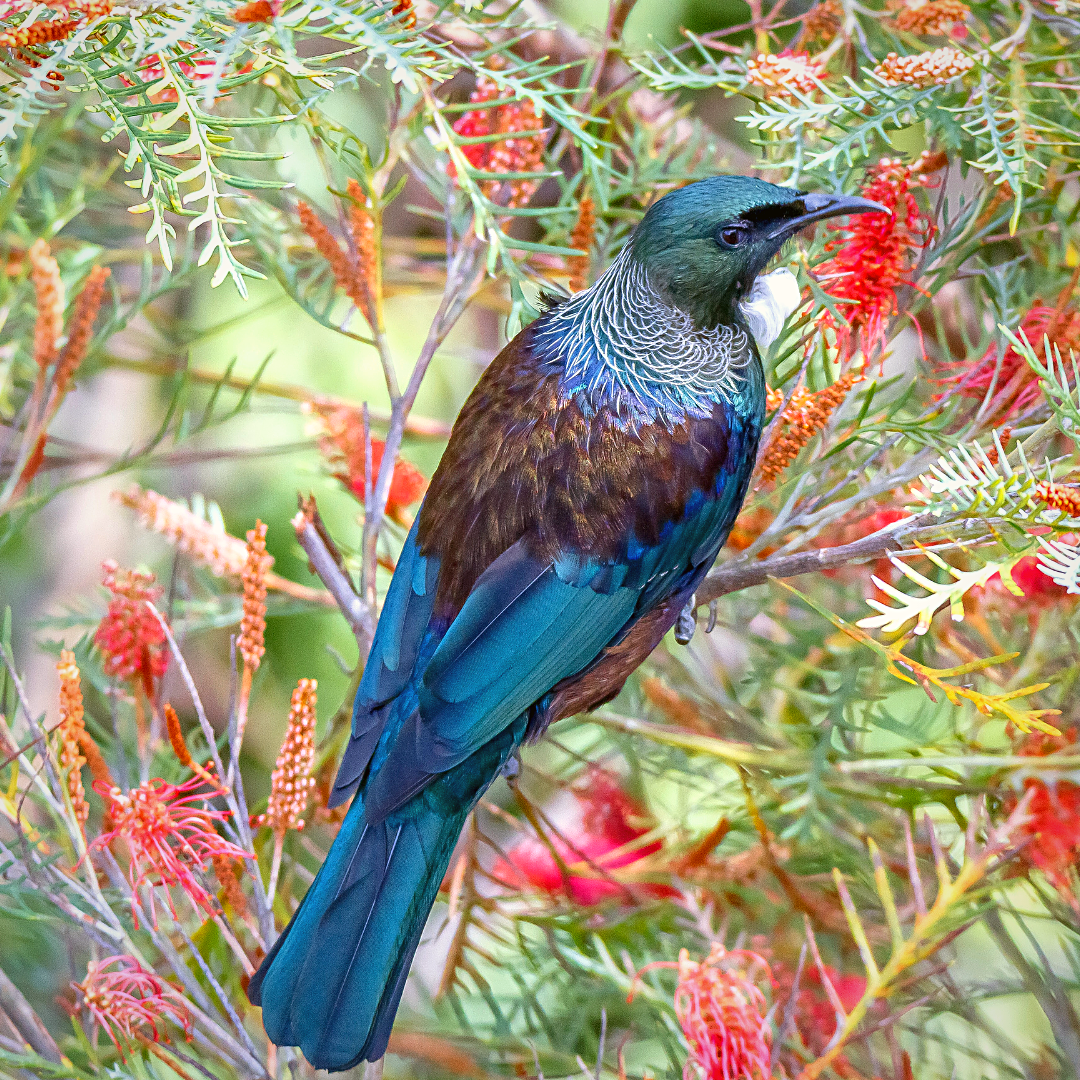Tūī - Facts and info.
Tūī are one of New Zealand’s most recognisable birds
Tūī are one of New Zealand’s most recognisable birds. Many a Kiwiana print or cushion features this gorgeous bird. Here’s a rundown of things you may not know about tui.
Standing at over 30cm tall this beautiful, but boisterous bird has iridescent blue/green head and wings, and distinctive white neck tufts which originally led it to be called the parson bird by the early settlers. It is endemic to New Zealand (only breeds here in NZ) and is one of our most iconic birds.
The Tūī is loud and easily recognisable from its call made up of whistles, clicks, coughs and grunts. It’s often the first to start singing in the morning and the last to sing at night, it's even known to sing to the moon on a clear moonlit night. They have been found to have different regional accents and are able to imitate the call of every bird in the forest. In the past, Māori kept them in cages and trained them to repeat welcome speeches up to 70 words long. They even trimmed their brush-like tongue to help them speak more clearly.
Tūī are very territorial and will defend their turf aggressively, chasing away other birds to make sure their food source is safe. And beware, they sometimes swoop down low for fun and dive bomb people. Residents of hilly suburbs like Titirangi, Auckland report Tūī enjoying a good dive bomb into the valley.
The Tūī is an important pollinator and seed distributor and plays a major role in restoring and sustaining New Zealand's natural habitat.
Sometimes a Tūī pair will make their nest in a nesting box, however, the box would need to be in a high position, as they live in the treetops. The Kohab Open Birdhouse is suitable for tui and big enough for them
The Tūī is part of the honeyeater family which means they mainly drink nectar using their long, strong beaks to reach deep down into native flowers. They also love fruit and will happily grab insects for a quick high-protein snack, too. They will fly long distances to get their favourite meal and once they have found a regular food supply they will become a common visitor.
You can help support the Tūī by planting native nectar-providing plants, or plants that support insects. Leaving out fresh fruit for them to feed off will also be much appreciated. You can provide them with nectar, such as the Kohab Nectar in a Kohab Bird Feeder, they will be attracted by the natural red colour and it will give them an easy meal full of energy and nutritional support.
We’d love you to share any pictures of tui in your garden or enjoying our Kohab Nectar.


